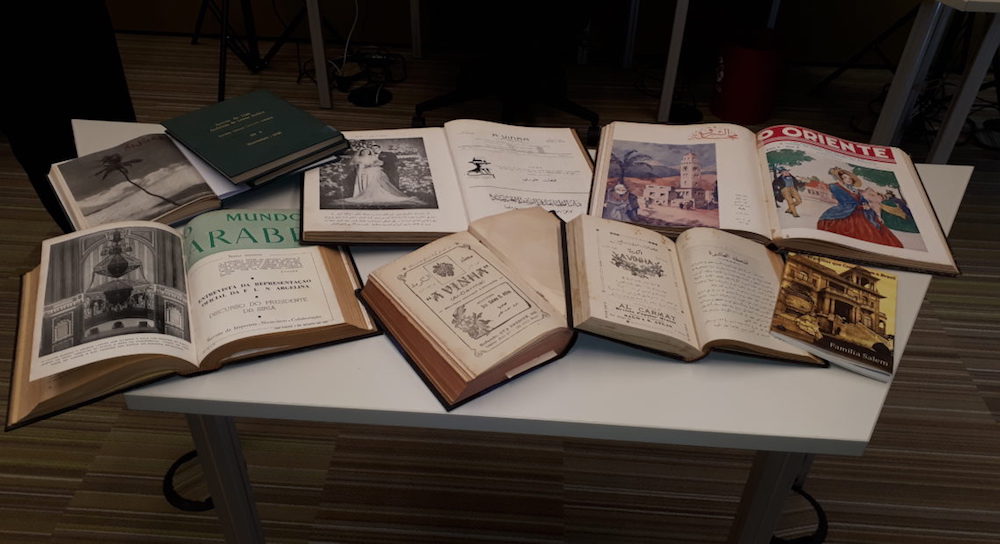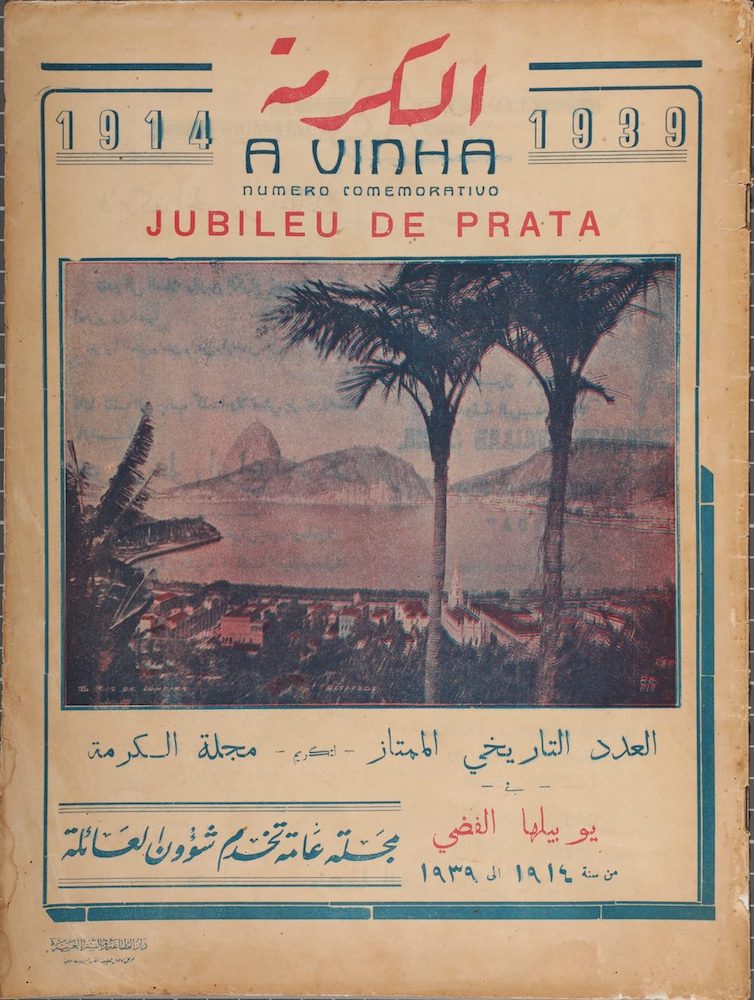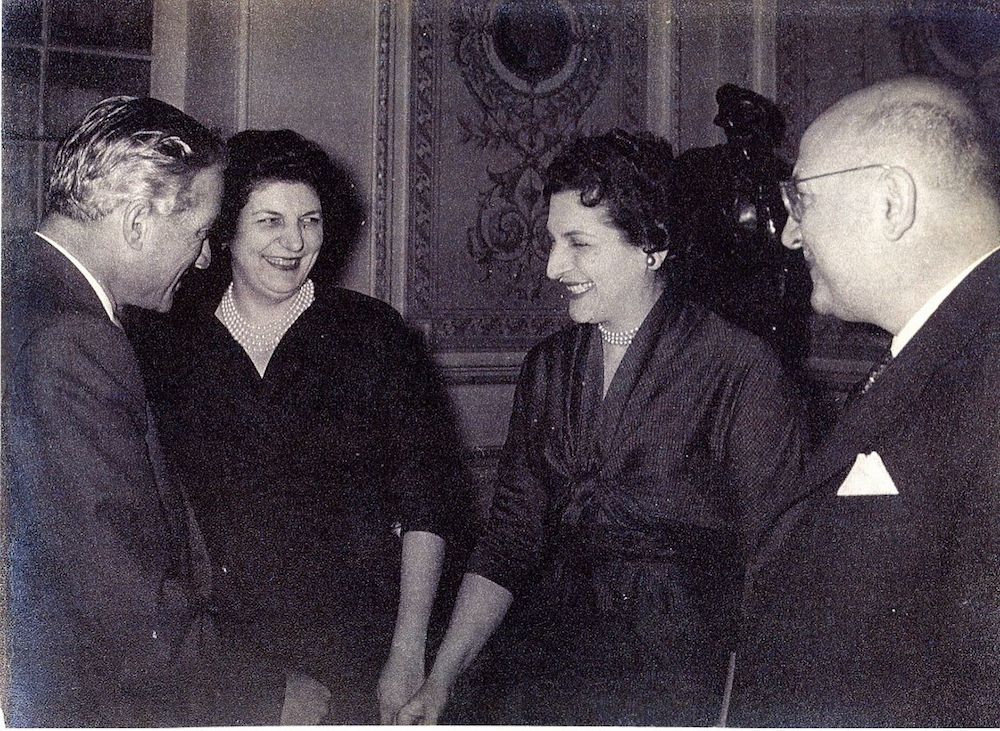SAO PAULO, Brazil: Although an estimated 18 million Latin Americans can trace their ancestry to the Arab region, little effort has been made to chronicle and conserve the writings, photographs and news clippings that document the history of their migration and settlement — until now.
Most of the Arabs who moved to Latin America did so in the final decades of the 19th century and the first half of the 20th, with the majority of them traveling from Syria and Lebanon in search of fortune and a fresh start far from the Ottoman Empire.
To collect and highlight the individual journeys of these Arab pioneers and their contribution to the New World, an archive dedicated to telling their stories has been created by the Holy Spirit University of Kaslik, also known as USEK, a private, not-for-profit Catholic university in Jounieh, Lebanon.
Inaugurated at the end of March this year, the collection currently includes about 200,000 pages from Arab newspapers and magazines, stacks of photographs, and other illuminating documents that help shed light on the diaspora’s presence in Latin America.
Brazilian-born Roberto Khatlab, director of USEK’s Latin American Studies and Cultures Center, or CECAL for short, conceived the project after spending several years working in the cultural department of the Brazilian embassy in Beirut and conducting independent research on Lebanese migration to Brazil.

Some of the documents that have been digitized and now are part of USEK's archive, including magazines Oriente and A Vinha. (Arab Brazilian Chamber of Commerce (CCAB) / USEK / Supplied)
“Over the years, I gathered lots of documents concerning that history,” he told Arab News.
During a trip to Latin America a few years ago, Khatlab realized a wealth of important historical material was at risk of being lost unless it could be properly collected and collated.
“Over time, such documents end up in the hands of grandchildren or great-grandchildren who do not speak Arabic and do not know what to do with them,” he said.
As a result, many people end up throwing away family collections or donating them to local libraries, which are not always equipped or qualified to adequately catalog them.
In addition, newspapers produced by early Arab immigrants were often printed on cheap, poor-quality paper that does not always stand the test of time, and so surviving copies can be extremely fragile.
“I have received 100-year-old newspapers which literally disintegrated as we tried to take them out of the envelope,” said Khatlab.
Syrian-Lebanese immigrants created the first Arabic-language Latin American newspaper, called Al-Fayha, in 1893 in the Brazilian city of Campinas.
In the local Portuguese language, its name was Mundo Largo, which translates as Wide World. As the author of several books about Brazil’s historical relationships with Lebanon and the wider Arab world, Khatlab recognizes the value of such historical documents for academic study and posterity.

Latin America has close to 18 million people of Arab origin, most of them in Brazil. (AFP)
“Under the Ottoman Empire, many intellectuals were not able to publish their ideas in the Arab world at the end of the 19th century,” said Khatlab. “In the nascent Arab press in countries like Brazil and Argentina, they found the space they needed.
“Many times, the articles published in the Arab press in Latin America by such thinkers were sent back to the Arab world and disseminated there in intellectual and political circles.”
Most of the early Arabic newspapers in Latin America were produced by Syrian or Lebanese migrants but there were also a number of Egyptian publications. Over the years, the Arab community launched newspapers that reflected a variety of viewpoints based around political ideologies, religious creeds, social clubs and the arts.
“Many poets and writers published works in the Latin American Arab press,” said Khatlab. “Some of them were renowned in the Arab world, while others disappeared. But their production and the ideas conveyed in their texts have great importance to Arabs, even now.”
The archive has attracted the support of institutions across Latin America that have connections to the Arab community and they have provided small teams who are helping to collect and digitize materials, using equipment donated by USEK.
INNUMBERS
Estimated Arab population by country
Brazil: 7-12 million
Argentina: 4.5 million
Venezuela: 1.6 million
Mexico: 1.5 million
Colombia: 1.5 million
Chile: 800,000
Source: Atlantic Council
One such institution is the Arab Brazilian Chamber of Commerce, or CCAB for short, which helped to collate full collections of magazines, including Revista Oriente (Orient Magazine), one of the most prominent publications produced by the Arab diaspora in Brazil during the 20th century.
“Different libraries and institutions had partial collections of Oriente,” Silvia Antibas, the director of CCAB’s cultural department, told Arab News. “Now, we managed to gather and digitize all of them for the first time.”
The Brazilian team also managed to assemble a collection of the magazine Al-Carmat, known in Portuguese as A Vinha (The Vineyard). It was edited for many years by a female Syrian-Brazilian author called Salwa Atlas.
The CCAB has also contributed to the archive an illuminating collection of photographs that provide a window on the social and domestic lives of the diaspora through the years.
“The pictures we collected show not only the community’s social events but also the architecture of houses, the fashion trends of those years, and how immigrants financially progressed and integrated into Brazilian society over time,” said Antibas.

The cover of one edition of A Vinha, published for years by Syrian-Brazilian intellectual Salwa Atlas, who was a pioneer among female intellectuals of the Syrian-Lebanese community in Brazil. (Clube Homs / USEK / Supplied)
The Jafet family — who ranked among the most illustrious families in Sao Paulo in the early 20th century — contributed a superb collection of photographs depicting the palatial homes built around that time by the city’s industrial bourgeoisie.
“Benjamin Jafet, my great-grandfather, came to Brazil in 1890 and worked as a ‘mascate’ (a word used in Brazil for an Arab door-to-door salesmen) for a few years in the countryside until he founded his first shop in downtown Sao Paulo,” Arthur Jafet, a 38-year-old lawyer and businessman, told Arab News.
Over the years, Benjamin and his brothers built one of Brazil’s greatest textile manufacturers and became wealthy leaders of the Lebanese community in the country.
As important philanthropists in Sao Paulo, the Jafets helped to fund not only Arab institutions such as the local Orthodox cathedral, the Syrian-Lebanese Hospital, and the Mount Lebanon Club, but also publications such as Revista Oriente.
“Their small palaces pointed to a rather European taste, with visible influences of the French neoclassical style but also oriental aspects,” said Jafet.
One of the photos in the collection shows Camille Chamoun, Lebanon’s president between 1952 and 1958, staying at one of the Jafet family’s opulent homes during a trip to Brazil.
As director of the Institute of Arab Culture in Sao Paulo and an adviser to the CCAB, Jafet is part of a new generation of Arab Latin Americans taking a renewed interest in their cultural origins.
Paulo Kehdi is the executive director of Chuf magazine, the in-house publication of the Mount Lebanon Club. He is among a number of Lebanese community leaders who launched Lebanity, a movement dedicated to encouraging Lebanese-Brazilians to rediscover their cultural roots.
“There has been a deliberate effort to reconnect Lebanese-Brazilians to their motherland, incentivizing them to obtain Lebanese citizenship, to visit the country and to help it during donation campaigns,” he told Arab News.

Lebanon's President Camille Chamoun with members of the Jafet family in São Paulo. He visited Brazil in 1954 and stayed at one of the family's palaces. (Arthur Jafet / Supplied)
The situation is similar in Argentina, which is home to an estimated 3 million people with Syrian or Lebanese roots.
For several years, Ninawa Daher, a journalist of Lebanese descent, hosted a TV show in the country devoted to reviving the interest among younger generations in their Lebanese origins. After her death in a car accident at the age of only 31 in 2011, her mother, Alicia, created the Ninawa Daher Foundation to continue her legacy, and it has partnered with USEK for the archive project.
“With Ninawa’s contacts, within a very short time we had already been able to obtain access to several wonderful collections of the community in Argentina,” Alicia Daher told Arab News.
The team has gathered stacks of newspapers, photographs and other rare materials, including two books written and autographed by renowned Lebanese-American writer, poet and visual artist Khalil Gibran.
“The Syrian and Lebanese people had a tremendous cultural impact in Argentina,” said Daher. “Now, more and more people and institutions are approaching us in order to offer materials about the immigration.”
In Beirut, meanwhile, Khatlab is hopeful the archive will continue to grow as the work on it expands to other Latin American countries and to include other types of documents, such as letters, film footage and even passenger manifests of the vessels that brought Arabs to the region.
Access to the archive is free and it is open to the general public.














